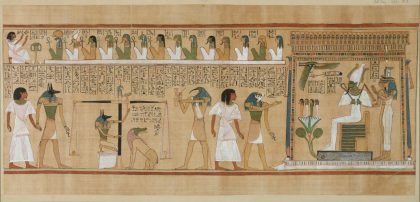Pyramids and Construction Techniques
The Great Pyramids and Other Notable Pyramids
The pyramids of Ancient Egypt, some of the most iconic structures in human history, served as tombs for pharaohs and significant figures. The most famous pyramids include the Great Pyramid of Giza (Khufu’s Pyramid), the Pyramid of Khafre, and the Pyramid of Menkaure. Other notable pyramids include the Bent Pyramid and the Red Pyramid at Dahshur, and the Pyramid of Djoser at Saqqara.
Construction Techniques and Process
1. Planning and Design
- Site Selection: The locations for pyramids were chosen carefully, often on the west bank of the Nile River, symbolizing the land of the dead where the sun sets.
- Solar Alignment: The pyramids were precisely aligned with the four cardinal points. This alignment showcases the ancient Egyptians’ advanced knowledge of astronomy and mathematics.
2. Materials and Quarries
- Limestone and Granite: Most of the pyramids were constructed using local limestone. Granite, often used for the inner chambers and casing stones, was quarried from Aswan.
- Stone Blocks: The stone blocks typically weighed between 2-3 tons, with some blocks weighing up to 15 tons.
3. Cutting and Transporting the Stones
- Cutting Techniques: The stone blocks were cut using copper tools and wooden wedges. This process was labor-intensive and time-consuming.
- Transportation: Stones were transported on wooden sledges, which were pulled over sand that was moistened with water to reduce friction.
4. Construction Phases
- Foundation Preparation: Before construction began, the foundation area was leveled and prepared to ensure the pyramid’s stability.
- Layer-by-Layer Construction: Pyramids were built in layers or steps. Stone blocks were moved up using ramps.
- Ramps: Ramps, either straight or spiral, were used during construction to transport the blocks to higher levels.
5. Inner Structures and Hidden Chambers
- Hidden Passages and Chambers: Inside the pyramids, there were hidden passages and chambers leading to the burial chamber. These were designed to protect the tomb from robbers.
- Burial Chamber: The burial chamber, often located at the pyramid’s center, housed the pharaoh’s sarcophagus and was filled with valuable items for the afterlife.
6. Casing Stones and Capstone
- Casing Stones: The outer surface of the pyramids was originally covered with smooth, white limestone casing stones that shone brightly in the sun.
- Capstone (Pyramidion): At the pyramid’s peak, a small capstone, known as the pyramidion, was placed. It often had religious significance and was possibly gilded.
Workforce and Organization
- Workers: Tens of thousands of workers were involved in pyramid construction. These included not only slaves but also skilled laborers, artisans, and seasonal laborers, such as farmers during the flooding season.
- Worker Settlements: Large settlements were established to house the workers, providing food, water, medical care, and rest areas.
Modern Theories and Research
- New Discoveries: Modern theories and discoveries continue to shed light on pyramid construction techniques. Advanced technologies help unravel the mysteries of these ancient structures.
- Robotics and CT Scans: Robotics and CT scans are used to explore the interior of pyramids, revealing hidden chambers and passages.
Conclusion
The pyramids stand as a testament to the ingenuity and religious fervor of Ancient Egypt. Their construction techniques and organizational skills highlight the knowledge and abilities of the era’s people. These structures continue to inspire awe and curiosity, serving as a rich field of study for scientists and archaeologists today.





